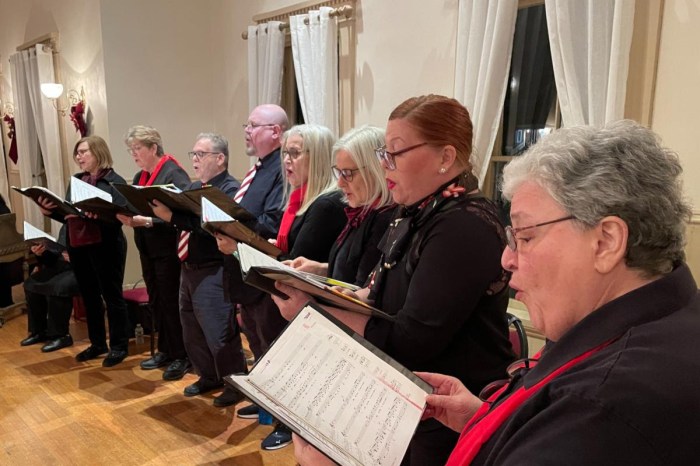In Part II: Art Festival Opens New Doors In New Neighborhoods
Now in its sixth year, Bushwick Open Studios-which took place from Friday, June 1 to Sunday, June 3 at sites throughout Bushwick, Ridgewood and beyond-has become a neighborhood institution, bringing art and art lovers to Brooklyn and Queens.

It has even become a revenue stream for local businesses. Scott McGibney, who has run the Wyckoff Starr coffee shop at 30 Wyckoff Ave. for the past six years, called this weekend “one of our busiest weekends all year.”
Mazelle, a new nearby bar and restaurant at 247 Starr St., displayed a sandwich board welcoming BOS attendees. When asked if more business was expected, a waitress replied “probably …. I hope so.”
It has become a destination for city agencies as well, as the city Department of Transportation (DOT) took advantage of the foot traffic near the Morgan Avenue L train stop by closing off Harrison Place between Bogart Street and Morgan Avenue for a bike safety exhibit.

Also setting up shop nearby was Fairtrades, a new initiative in conjunction with NYDesigns that offers classes in commercial photography and set design at LaGuardia Community College in Long Island City.
According to Arthur Seafahrt, the program is designed to save artists from careers in the service industry.
The community roundtable
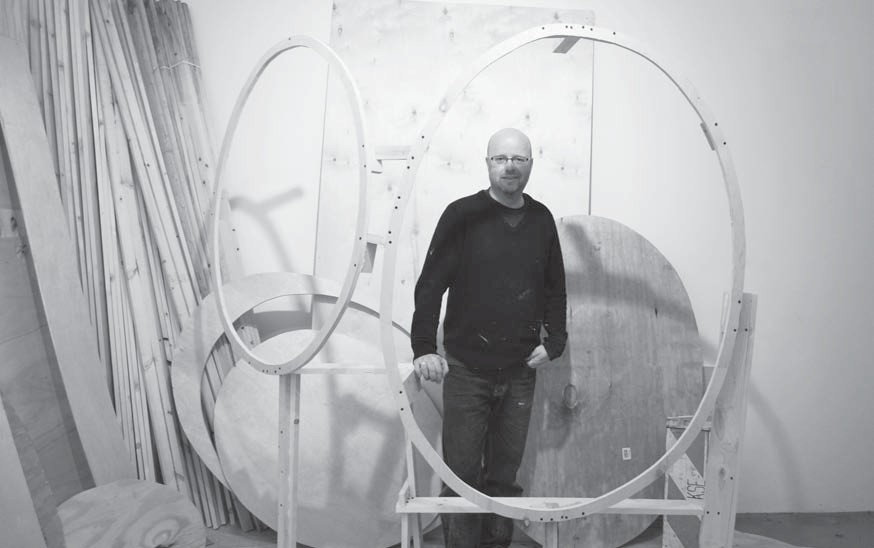
One of Bushwick Open Studios’ signature events is a roundtable discussion where residents and newcomers alike share their opinion of Bushwick then and now.
For this year’s edition, which took place Sunday afternoon, June 3 at Momenta Art in 56 Bogart St., Arts in Bushwick brought out the star power, with Brooklyn Community Board 4 Chairperson Julie Dent, former Chairperson John Dereszewski, “Pioneers of Bushwick” curator Daryl-Ann Saunders and Arts is Bushwick Co-Founder Laura Braslow joining local residents (including a woman who brought her mom from Arizona) on the dais.
“Coming into Bushwick is a real breath of fresh air in terms of the diversity,” said the mother.
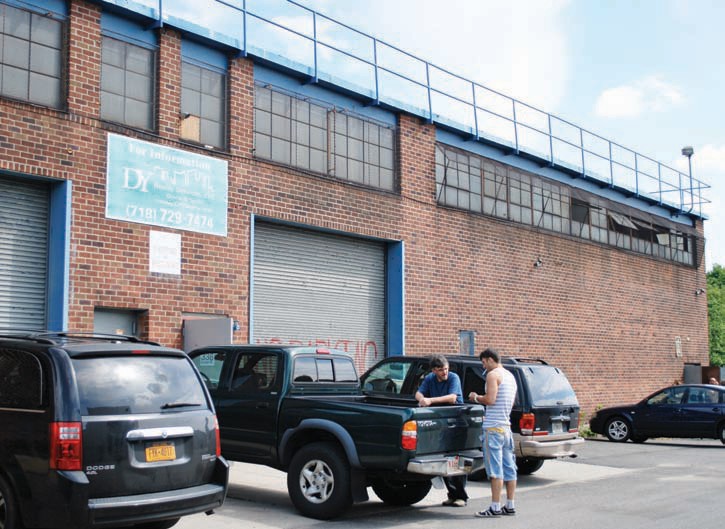
Moderating the panel was Aaron Short of The Brooklyn Paper and formerly of BushwickBk.com.
At the event, Modesto “Flako” Jimenez, a performer and writer who has lived in Bushwick in the 1990s and recently returned to the area, told the panel that “This is the first time that I’m actually walking through Bushwick Open Studios and feeling comfortable in my own backyard.”
He told the crowd about growing up in Bushwick before the art community began to settle in: “I had to be in a gang and tattoo myself to be able to read Shakespeare.”
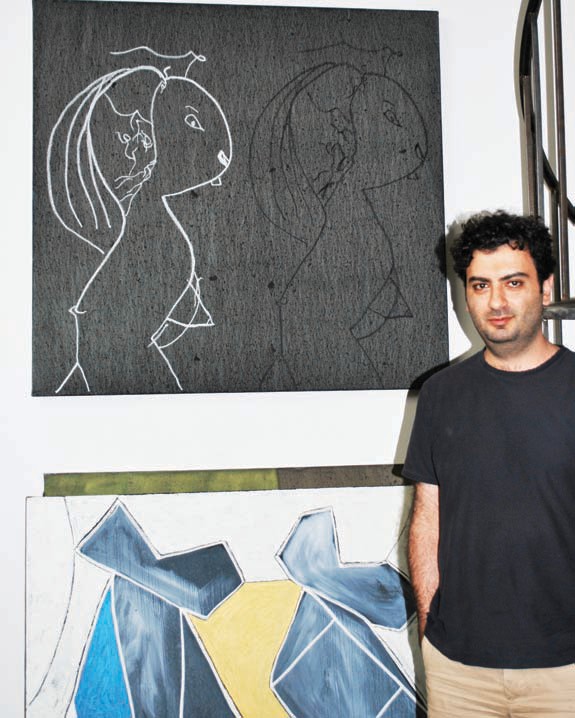
Now, the neighborhood is different, but he claimed that the divisions remain. He used as an example his parents’ apartment building, where the newer residents of the area had their homes painted but older residents’ homes were not as carefully maintained.
Also sitting in was Joe Gagliano, an artist who traveled all the way from Glendale to seek a helping hand in bringing the arts to his neighborhood.
“What Bushwick has and what Ridgewood has,” said Gagliano, “I want for Glendale.”
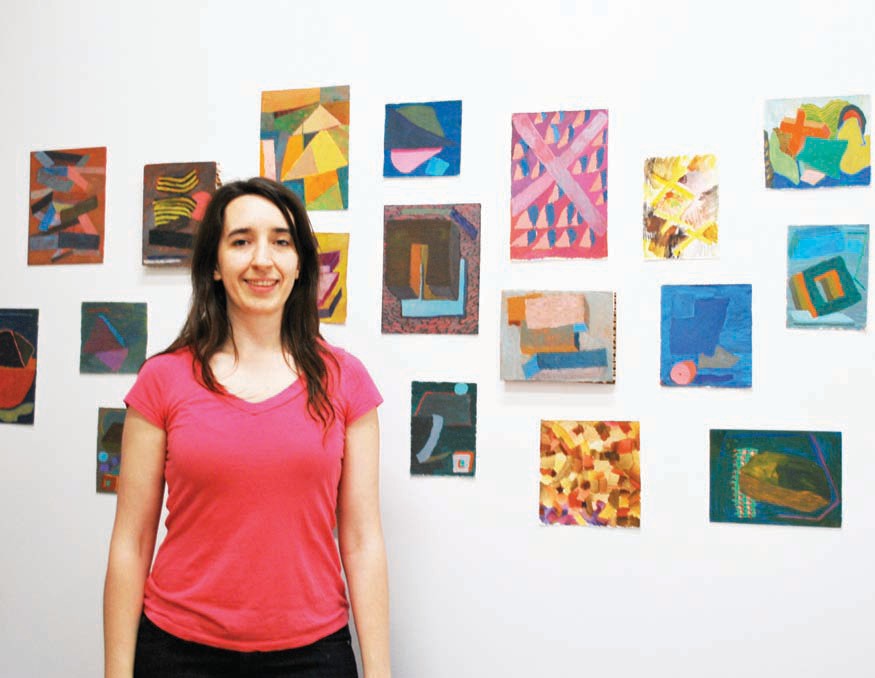
Dereszewski, who also served for a time on Brooklyn Board 1 in Williamsburg, noted the increase in living costs in the area and throughout the city as a concern.
“The recent economic problems have given us a little time” to plan the area’s future, he said, adding that Bushwick have looked different without the nationwide recession.
Saunders, whose portraits of longtime Bushwick residents can currently be seen at the Diana Jones Senior Center and on the first floor of Wyckoff Heights Medical Center, lamented the “dorm party attitude” of some of the newer residents.
“They don’t care very much around the neighborhood at all. They just want to get drunk and hang out,” she said. “It’s a lack of accountability for behavior that I see.”
Growing up and spreading out
As Bushwick Open Studios continues to grow in size, it continues to extend farther north and east, to buildings such as the one on 338 Moffat St. in Bushwick, north of Knickerbocker Avenue.
There, the site’s owner converted a former tombstone factory into a set of artist spaces in March, and quickly found several tenants, among them John Haro, a painter who moved to the area from Midtown Manhattan.
“I think in two years,” he said, “we’ll see a whole different feel to the area.”
Down the hall-past the troupe of acrobats practicing their craft-Jeff Klapperich was putting the finishing touches on converting his loft space into a performance space, which he and his roommates have appropriately dubbed Where The Sidewalk Ends.
Klapperich and his friends took the loft space in January and began modifying it to fit their needs, constructing a movable wall in the center of the site and a wooden second floor of beds.
A three-year resident of Bushwick, he compared the area to “what SoHo was like in the ’70s and ’80s.”
A few blocks away is someone who actually lived in SoHo during that time period. Inside a converted pajama factory on Norman and Covert streets on the Ridgewood side of the border, shelves stretch from the floor to the ceiling containing the books and artwork that prolific au thor and critic Richard Kostelanetz has amassed throughout his career.
He echoed Klapperich’s statement, saying that “I think this can become the next Soho.”
North on the same block, among a row of two-family homes, a small gray building houses Outpost Artist Resources, an art collective formerly housed in Williamsburg but in 1685 Norman St. in Ridgewood for the past three years.
For BOS, Outpost turned its sights on its new home with “Actual ‘Wood,” a showcase of Ridgewood artists. Unique among them is “Picked Balloons” by Moira Williams, part of a performance piece in which the artist collects dreams from audience members, whispers them into a balloon and pickles them in a jar.
Outpost’s Ruth Kahn told the Times Newsweekly that she attempted to invite neighbors from her block to the show but did not receive much response, but added that she did not want to have inter-community relationships distract Outpost from its primary mission of helping artists.
Both Kahn and Kostelanetz lamented the lack of a space that could act as a central meeting place for artists in the area, especially with the closing of Silent Barn last year.
All the way across town, at Bushwick Open Studios’ westernmost location, Liz Ainslie invited visitors to her studio in a converted factory building at Leonard and Meserole streets in Williamsburg.
An eight-year resident of the area, Ainslie has seen the neighborhood change, with condominiums rising and restaurants and bars following.
Ainslie is also a longtime Bushwick Open Studios follower, and exhibited her work for the first time last year at “Seeking Space.” Her studio is adorned with colorful, abstract, letter size canvas paintings.
“It seems to be getting bigger every year,” she said of BOS, adding that the quality of the work has also improved. “Bushwick has a little bit more of a radical style.”
When asked where the neighborhood will be eight years from now, Ainslie pointed out the window to a condominium located nearby that she claimed was only half-full.
“More and more people are going to be here,” she said. “I hope families get to stay too.”



